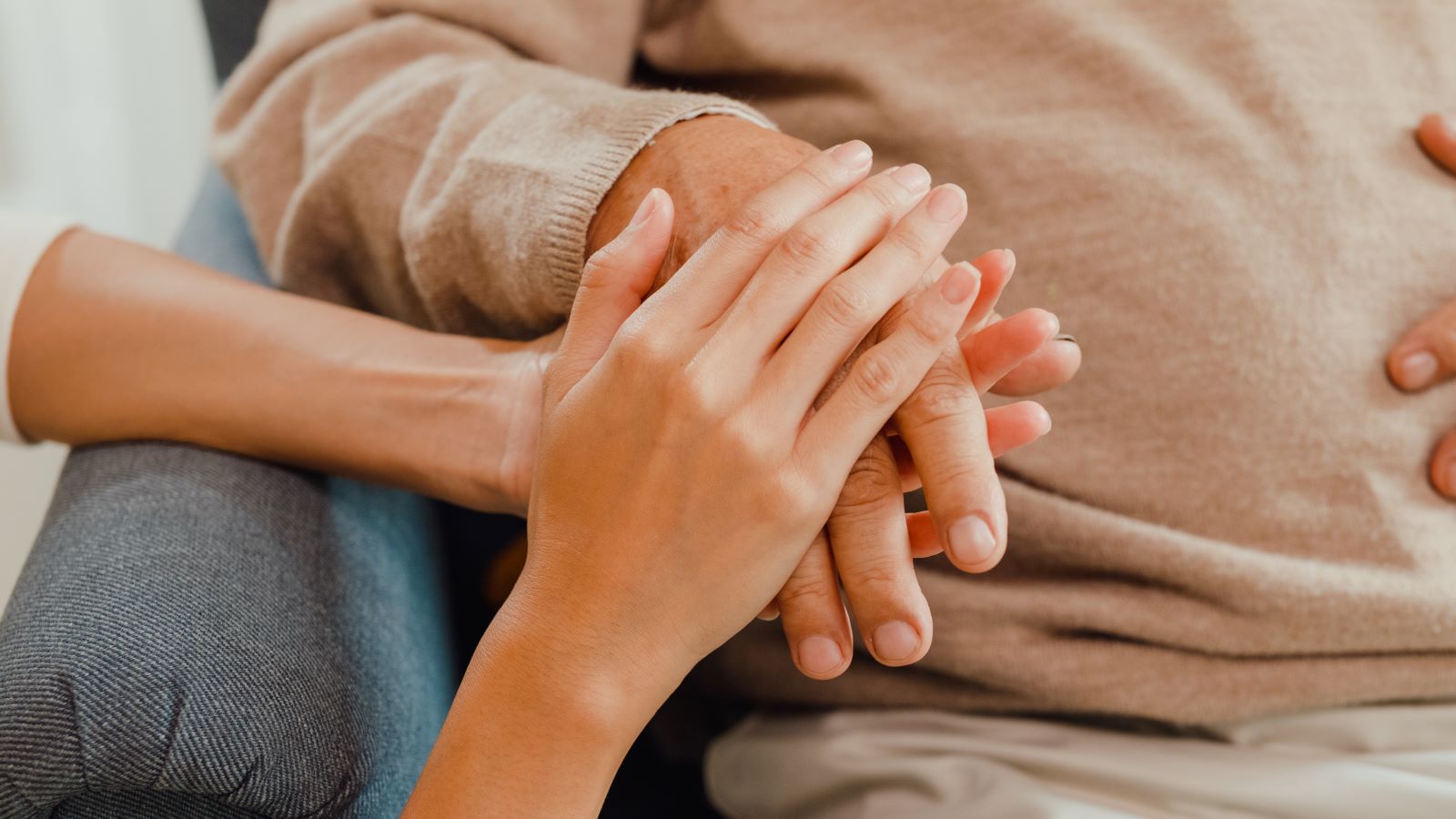<< Back
Treating Parkinson’s: It’s Never Too Late

May 18, 2023
Fourteen years ago, Rosellen Waiveris felt a constant tingling in her right index finger, like a muscle spasm that just never stopped.
She went to her primary care provider, then a neurologist but was sent home with few answers. A year later, the Goshen resident was referred to a different specialist and eventually diagnosed with Parkinson’s disease. When she was told some other early symptoms of Parkinson’s, she realized she had several of them for as many as 20 years.
“I worked for years in a hospital lab where I was always around solvents and chemicals. I thought maybe that was it,” says Waiveris, now 74 years old and a patient at the Chase Family Movement Disorders Center, part of the Hartford HealthCare Ayer Neuroscience Institute.
While her symptoms were – and remain – “fairly mild,” she says the progressive neurological condition spread from that one finger to the rest of her right arm, then her left arm and, finally, to her legs, although to a lesser degree.
“I don’t have much trouble walking, but my tremors have definitely gotten worse,” Waiveris says, adding that she eventually had to give up her quilting but still manages to hook rugs.
Her Parkinson’s journey
Along the way, she has also been an active member of the Ayer Parkinson’s Disease Support Group and become something of a trailblazer – participating in a Boston research trial determining the efficiency of biopsy to diagnose Parkinson’s and, later, opting for deep brain stimulation (DBS) to control the tremors.
“Someone new to our support group said they were diagnosed with a biopsy and I thought, ‘I had something to do with that!’” Waiveris says.
At the Chase Family Movement Disorders Center, she also found Michelle Dagostine, MD, whom she adores.
“I was so lucky to find Dr. Dagostine – she’s so happy and willing to give her time to her patients. She encouraged me to get the DBS, which was the best thing in the world!” Waiveris says.
The DBS solution
Almost a decade after her diagnosis – as Parkinson’s began to affect her facial expressions, causing a symptom called flat face, and her voice was “getting messed up” – Waiveris scheduled DBS.
The procedure, Dr. Dagostine explains, includes two steps:
- An initial surgery is to implant wires for the DBS device in the part of the brain triggering the tremors. The device works like a pacemaker, sending signals that stop or lessen the tremors.
- A second procedure about a month later is to attach the wires to the device and activate it.
The result, Waiveris says, is almost instantaneous and powerful.
“The disease still progresses but it’s more manageable,” Waiveris says. “I feel so incredibly happy with this decision.”
DBS fears
Unfortunately, she is in the minority of Parkinson’s patients who take advantage DBS as an option, Dr. Dagostine says.
“While it might frighten some people to have a doctor operate on their brain, DBS is the best option for controlling essential tremor and Parkinson’s disease. That helps patients live a higher-quality life,” she notes.
She’s hoping that hearing the stories of people like Waiveris will encourage others to seek the treatment as well.